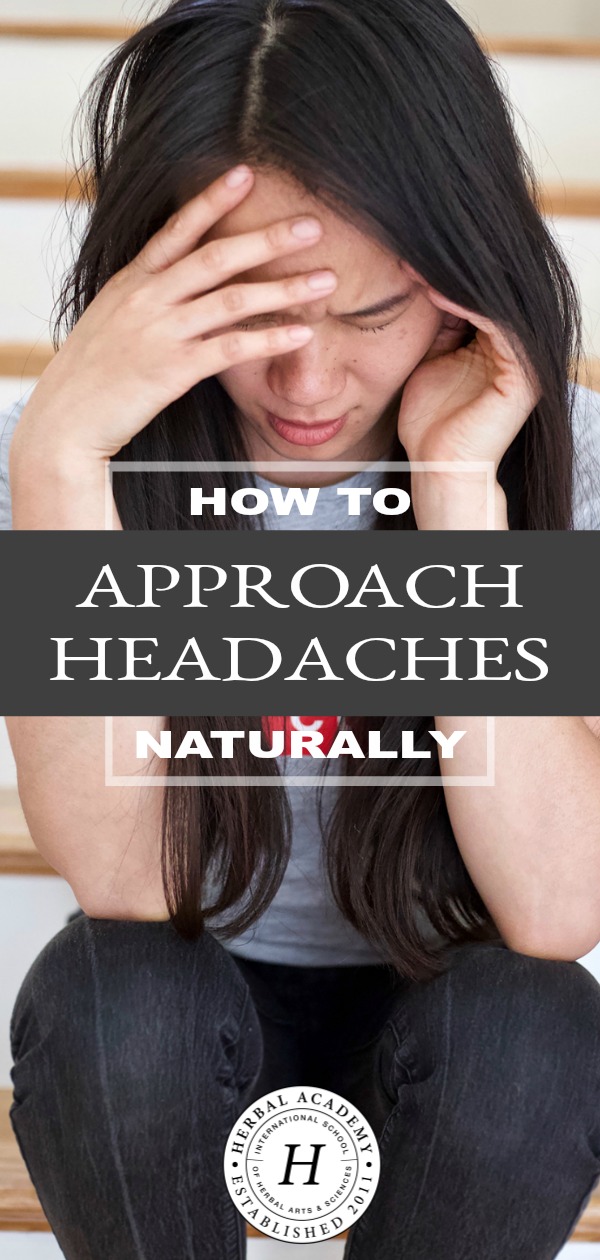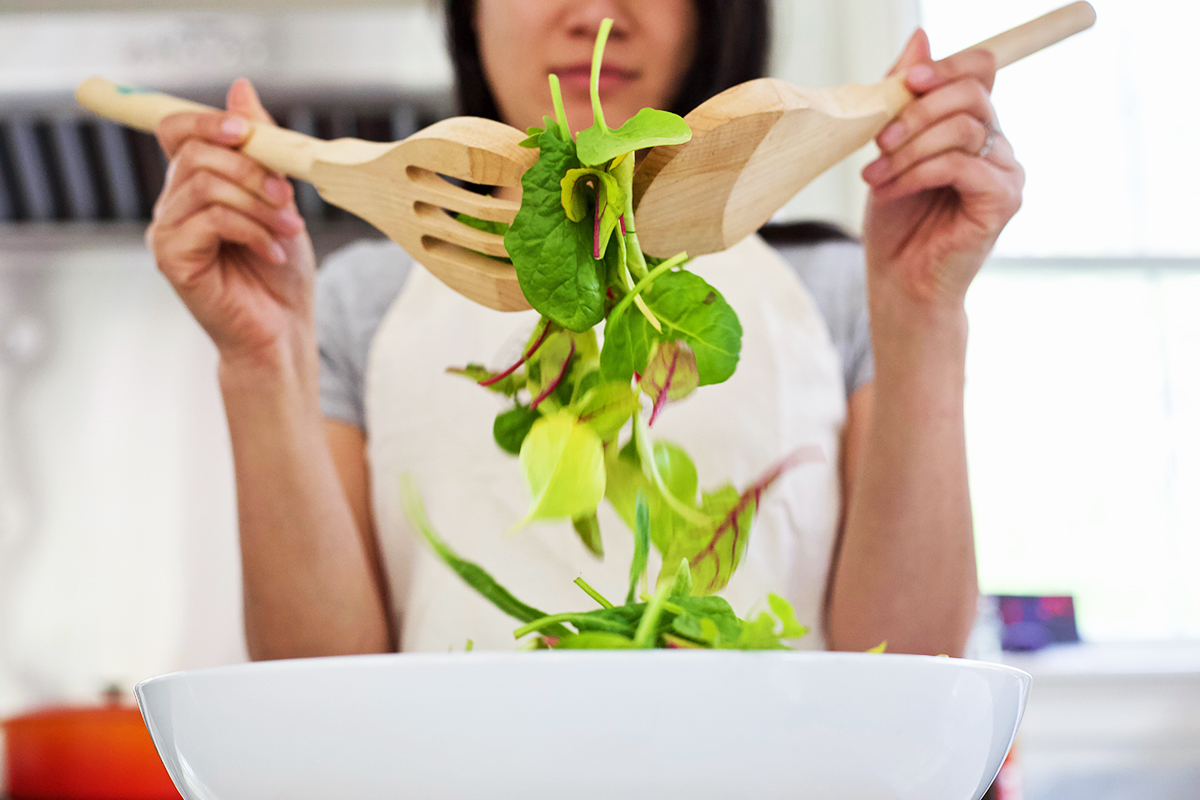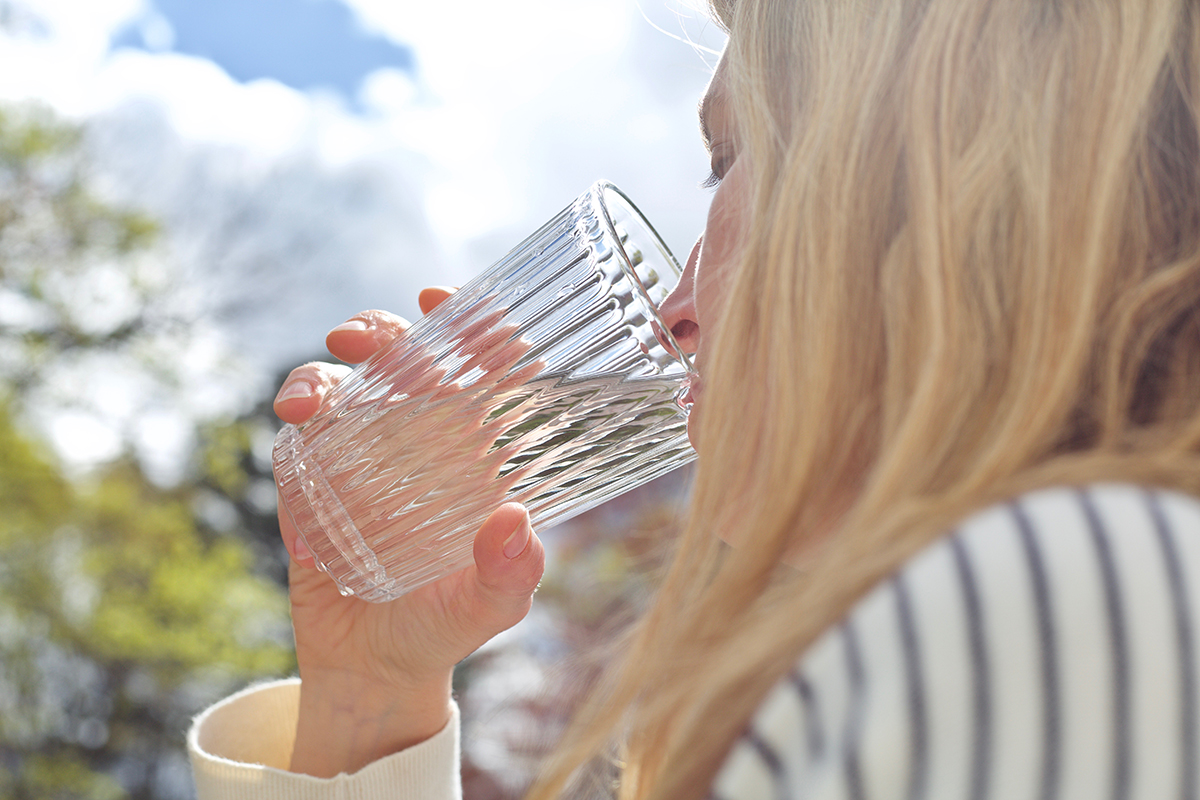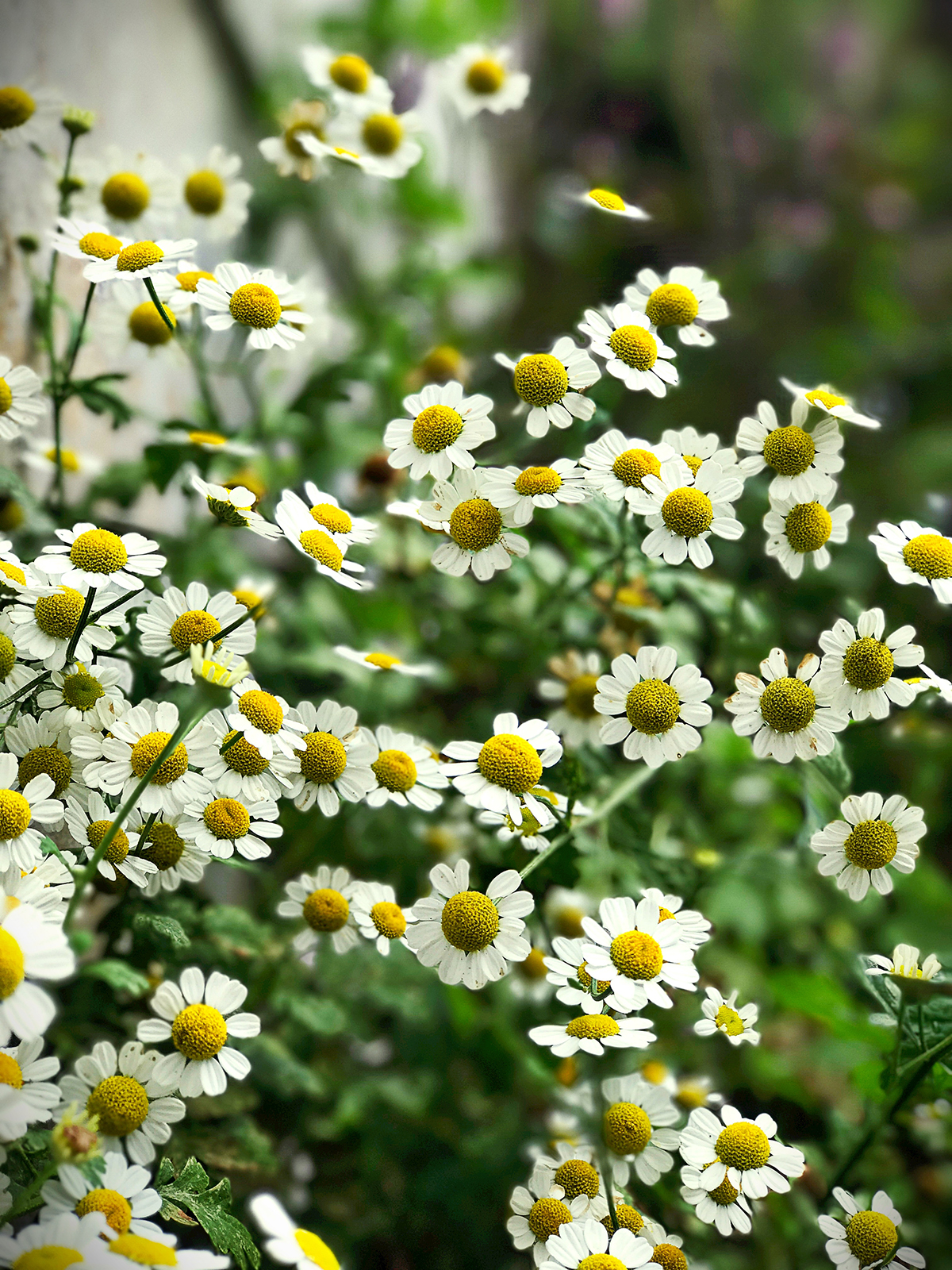
How To Approach Headaches Naturally
There’s nothing that can make me reach for an over-the-counter pain reliever faster than a splitting headache. Since I want to avoid unnecessary medications as much as possible (saving them for when I need them), I approach headaches naturally through dietary, herbal, and lifestyle methods before medications are required.
Over the years, I have not only learned more about my body and what triggers headaches for me, but I’ve learned to incorporate dietary, herbal, and lifestyle factors into my life to decrease the likelihood of developing a headache and helping me approach headaches naturally when I do experience one.
In this article, I’d like to share what I’ve found about the common types of headaches—how they present themselves and what triggers them, as well as various dietary, herbal, and lifestyle facets that can be of assistance when one wants to approach headaches naturally.
Headaches 101
According to WebMD, there are four main types of headaches.
- Tension headaches
- Migraine headaches
- Cluster headaches
- Sinus headaches
(WebMD.com, n.d.)

Tension headache pain is typically dull and constant. It can be short-lived or last a long time. Eye and muscle strain often causes these types of headaches. They can be related to stress and poor posture as well as lifestyle components like too little sleep, too much caffeine, or grinding your teeth at night.
Migraines are intense headaches that usually get worse over time. They can lead to upset stomach and sensitivity to light and sound. While the cause of migraine headaches isn’t entirely known, genetics as well as stress and strain on the nervous system, such as intense excitement and emotions, heavy exercise, or environmental changes, are believed to trigger these types of headaches.
Cluster headaches are quick, intense headaches that can come and go, repeatedly, over several days or weeks. While the root cause is not known, it seems that men, particularly those who smoke, experience them most often. Stress, food, and alcohol are also believed to trigger cluster headaches.
Lastly, sinus headaches occur in the front of the face near the sinus cavities (around the eyes, cheeks, and forehead). These headaches present as a feeling of pressure in the front of the face. Allergies and infections most often cause sinus headaches.
How To Approach Headaches Naturally
When one wants to approach headaches naturally, the following areas are essential points to focus on when it comes to finding headache help—whether it’s decreasing the likelihood of a headache occurring or managing a headache as naturally as you can when it does take place.
Lifestyle Aids
One’s lifestyle choices play a huge role in the likelihood of various types of headaches taking place. Below are some things I have found that can help when it comes to making good, healthy lifestyle choices that can help you approach headaches naturally.
Minimize Stress
Stress is one of the most common causes of headaches.
When it comes to minimizing stress in my life, I’ve found that knowing what my priorities are and aren’t help me to understand where to focus my time and energy. I’ve also learned that there are some things in life that I cannot control, and if I can’t control it, then I really shouldn’t worry about it. I’ve also found that keeping lists, journaling, and spending time in nature help to keep me feeling grounded and balanced. I also do what I can to delegate tasks to others when possible.
Some of the other lifestyle elements discussed below can also assist in helping one to manage stress better. Also, if stress is a common headache trigger for you, you might want to check out the Herbal Academy’s Herbal Self-Care for Stress Management Course to help you learn even more about managing stress naturally.
Don’t Forget To Exercise
Exercise is another lifestyle factor that can help you approach headaches naturally. Activities that help to stretch muscles, promote flexibility, and strengthen one’s core, such as yoga, can help decrease the risk of tension developing in the body and help the body to be properly aligned. If musculoskeletal issues are the cause of tension in your body and exercise isn’t enough to help, perhaps regular visits to a massage therapist, chiropractor, or a cranio-sacral therapist would be beneficial.
Another lifestyle tip that is related to exercise is taking regular breaks from things you’re working on during the day whether it’s school, housework, or your job. Taking time to get outside, breathe in some fresh air, and get a bit of low-intensity walking in, even if just for 5-10 minutes, is a great way to promote wellness. Not only do these little breaks help to reduce stress, musculoskeletal tension, and eye-strain, but they can help to clear your mind and gently stimulate your circulatory and lymphatic systems as well.
Get Your Sleep
Sleep is another crucial area of focus. Getting a sufficient amount of sleep each night can help you feel well rested and ready for the day. Once you find the right amount of sleep for you, prioritize going to bed and getting up at a consistent time each day. Proper sleep can not only reduce stress, but it can help your body to feel less fatigued which is common when you’re running on little sleep.
Relaxation Techniques
What helps you relax? Have you thought about it? If not, spend some time thinking about things that you find relaxing and try to schedule time for those things in your life.
Spending time in nature is a big stress reliever for me. Not only does it relieve stress, but it helps me to feel more grounded, to think more clearly, and to prioritize those things that are most important in life. Getting a gentle relaxing massage or taking long, warm baths are a couple of other things that help me to relax as well.
Clean Your House
While certainly not a favorite activity of most people, keeping one’s house clean can help to decrease the chance of a headache materializing, mainly if you are sensitive to allergens like mold, dust, and pet dander (Groves, 2016).
Dietary Aids
A healthy, nourishing, well-rounded diet is another vital area to address when one wants to approach headaches naturally.
Nourishing Diet
Because our bodies are designed to break down food and feed our cells with the macro- and micronutrients found in those foods, it is crucial that we provide our bodies with the kind of foods that are nourishing to the body in the first place. Not only do we need a good mixture of carbohydrates, proteins, and fats in our diet, but we require sufficient vitamins and minerals as well. While there are a variety of diets one can follow, a diet that consists of food as close to its natural state as possible is an excellent guideline to follow.
Limit Stimulants
Another dietary consideration when approaching headaches naturally is limiting stimulants such as caffeine. A variety of foods contain caffeine, such as coffee, green and black tea, and chocolate among other things. Stimulants, either too much of them or withdrawal from them, can trigger headaches, so it’s best to keep these to a minimum in one’s diet and to slowly decrease the amount you consume each day if you are trying to wean yourself off of them.
Stay Hydrated
Drinking water and staying sufficiently hydrated is another way to approach headaches naturally. Dehydration can trigger tension and impact blood flow in the body as the blood isn’t as viscous as it would be when properly hydrated which can lead to tension headaches. Staying sufficiently hydrated also helps to flush toxins from the body which can assist the body in proper functioning and reduce the likelihood of headaches happening as well.
Avoid Allergens
It is also wise to avoid foods that tend to trigger headaches, such as foods with caffeine, dairy, additives, preservatives, or other dietary allergens. It might take some time to identify nutritional triggers to headaches, but it’s well worth the effort of finding and avoiding them to decrease the chance of a headache arising.
Herbal Aids
Another way to approach headaches naturally is to use herbal allies for assistance when needed. When it comes to finding the right herbs for headache support, my first thought goes to herbs that support digestion and detoxification, so the body is functioning at its best, making headaches less likely to occur. From there, I look to herbs that support various body systems associated with headaches, such as the nervous, cardiovascular, and endocrine systems. These herbs can be used as valuable allies when headaches do take place.
Herbs for General Wellness
Alterative herbs are my herb of choice when I think of using plants for general wellness purposes. Alteratives work to improve the body’s detoxification processes, usually through the liver, lymphatic, and kidneys (Groves, 2016), and that in and of itself can go a long way in keeping the body functioning well. Using alterative herbs can be a great first step to approaching headaches naturally. Herbal alteratives is a broad category of herbs so let’s look at a few targeted groups of herbs that can fall under this umbrella.
- Bitter herbs, such as gentian (Gentiana lutea) root, catnip (Nepeta cataria) leaf, and hops (Humulus lupulus) strobiles, can help with the digestive process as they stimulate the release of gastric juices that help with the breakdown of foods.
- Liver moving herbs, such as dandelion (Taraxacum officinalis) root, burdock (Arctium lappa) root, and chicory (Cichorium intybus) root, help support the liver by encouraging bile production and excretion—two things that help the body detox itself of waste products.
- Lymphatic herbs, such as calendula (Calendula officinalis) flower, red clover (Trifolium pratense) aerial parts, and cleavers (Galium aparine) aerial parts, stimulate the lymphatic system to move and effectively remove waste products from the body.
- Diuretic herbs, such as dandelion (Taraxacum officinalis) leaf, nettle (Urtica dioica) leaf, and parsley (Petroselinum crispum) leaf, work to increase urinary output, thus, removing more toxins from the body.
Another thing to consider when using alterative herbs when approaching headaches naturally is to choose herbs that fit into multiple categories. Dandelion and burdock are two examples. Dandelion is not only a bitter, but it’s a liver mover and diuretic as well, and burdock acts as a bitter, liver mover, and lymphatic.
Ultimately, when the digestive, hepatic, lymphatic, and urinary systems are properly clearing toxins from the body, one is less likely to experience unwanted conditions such as headaches.
Herbs to Support Headaches
If you find yourself with a headache, it’s helpful to identify what has triggered the headache and address the root cause. Often, implementing the lifestyle recommendations above are enough to bring some relief over time. If not, there are several types of herbs that you may find helpful in assisting you when a headache is present.
For tension-related headaches, nervine herbs, such as wood betony (Stachys officinalis), blue vervain (Verbena hastata), and pedicularis (Pedicularis spp.) can be beneficial in soothing the nerves and relaxing the muscles, releasing tension from the body (Groves, 2016). Migraine headaches can benefit from feverfew (Tanacetum parthenium) as it soothes inflammation, relaxes blood vessels, and assists the body in keeping the blood smooth and slick (Groves, 2016) and white willow (Salix alba) bark. Clematis (Clematis spp.) is commonly used for cluster headaches, and circulatory stimulating herbs that are known to thin blood, such as ginger (Zingiber officinale) can be used at the onset of a headache to decrease the intensity of it (Groves, 2016).
Caution: Before using herbs to approach headaches naturally, we recommend you research each herb you plant to use, researching its safety and dosage information. If you are pregnant, nursing, taking medication, or have a chronic health condition, please speak with your doctor before using herbs.
Finally
If you find yourself experiencing the discomfort of a headache, take some time to first look into your diet and lifestyle to find relief. If you need more assistance in approaching headaches naturally, don’t forget that herbs can help to support your body during times of wellness as well as during times of need. You can even learn how essential oils can help with your headaches in this post.
The topic of headaches is covered much more in-depth in Unit 5 of the Intermediate Herbal Course. If this is something you find yourself struggling with regularly and you would like to approach headaches naturally, let me encourage you to check this course out.

REFERENCES
Groves, M.N. (2016). Body into balance: An herbal guide to holistic self-care. North Adams, MA: Story Publishing.
WebMD.com. (n.d.). The types of headaches and their causes. Retrieved from https://www.webmd.com/migraines-headaches/understanding-headache-basics#1












